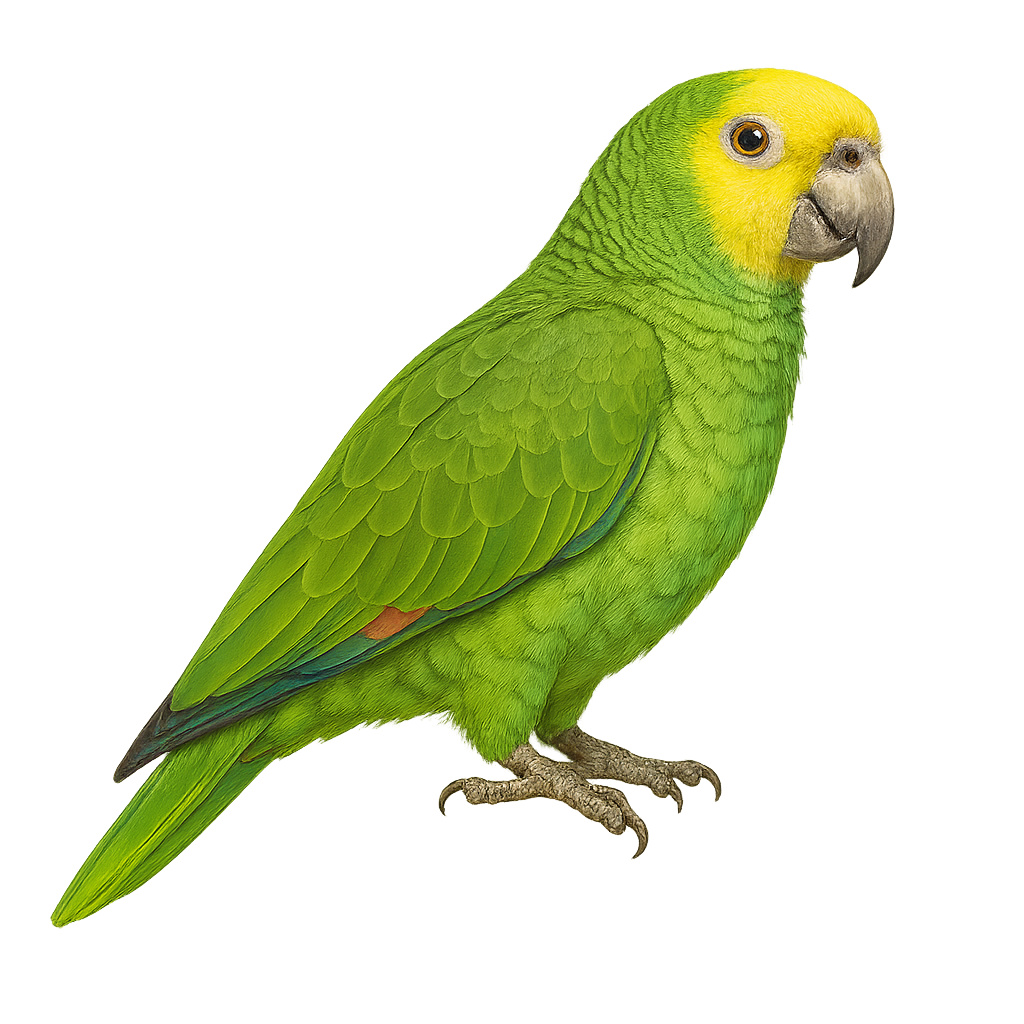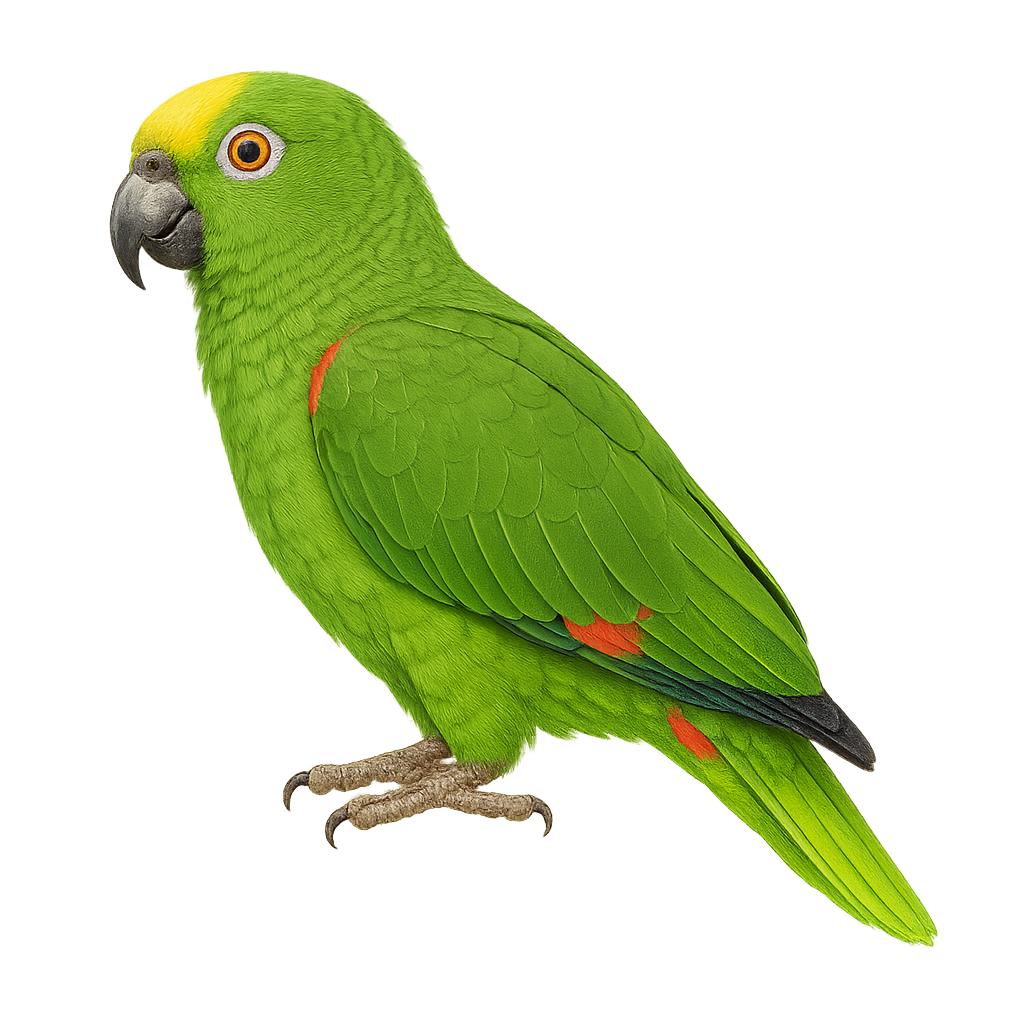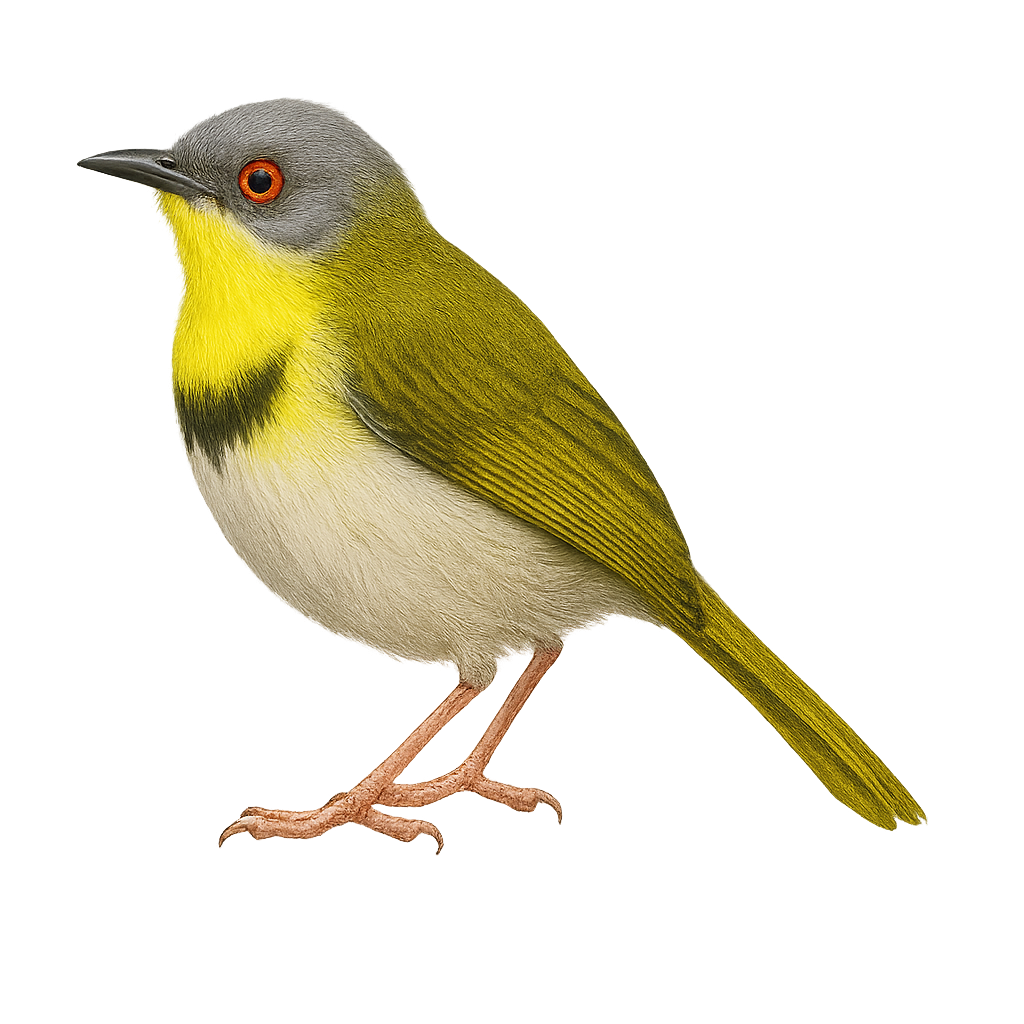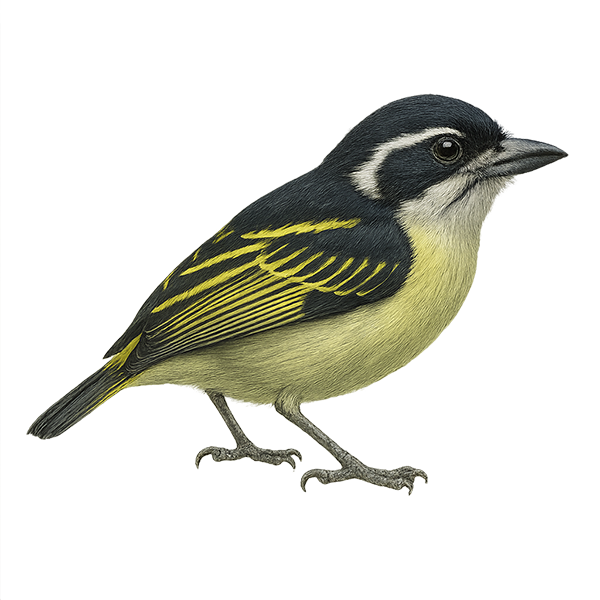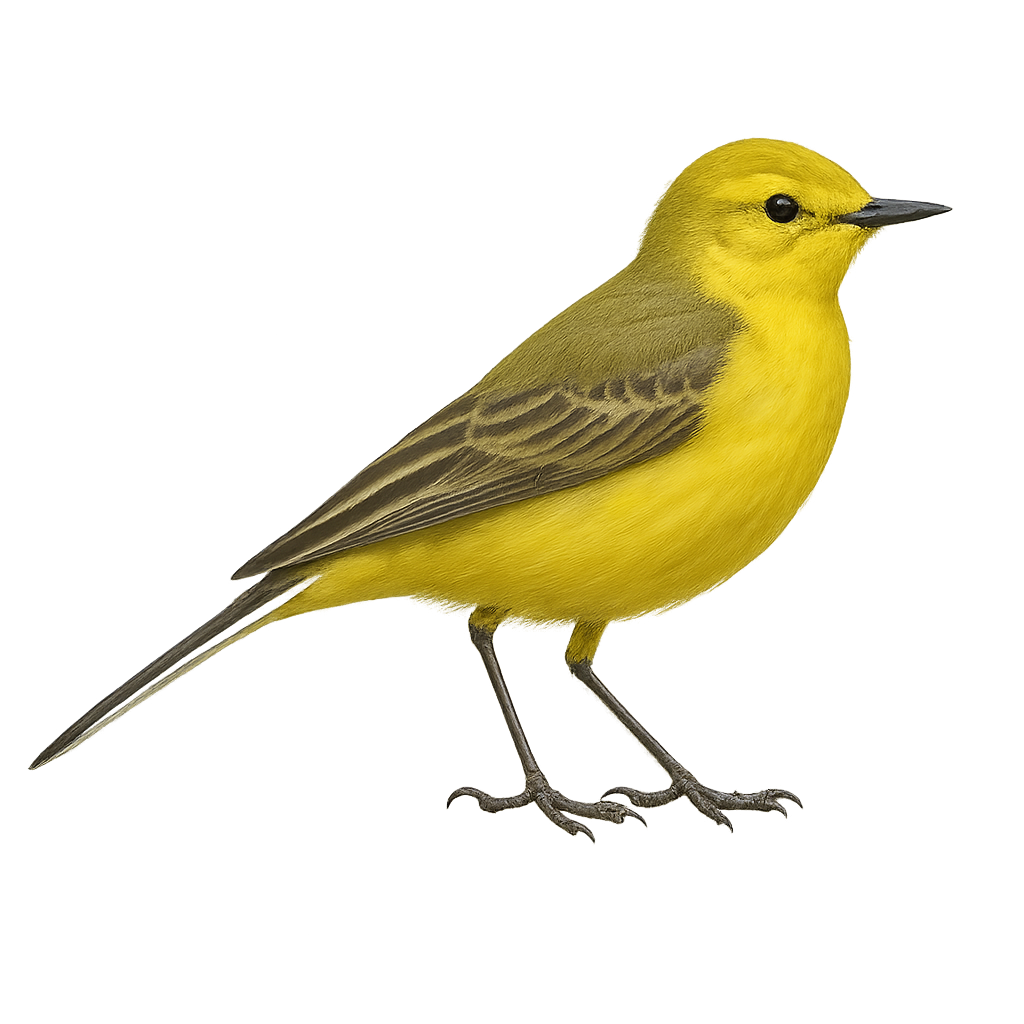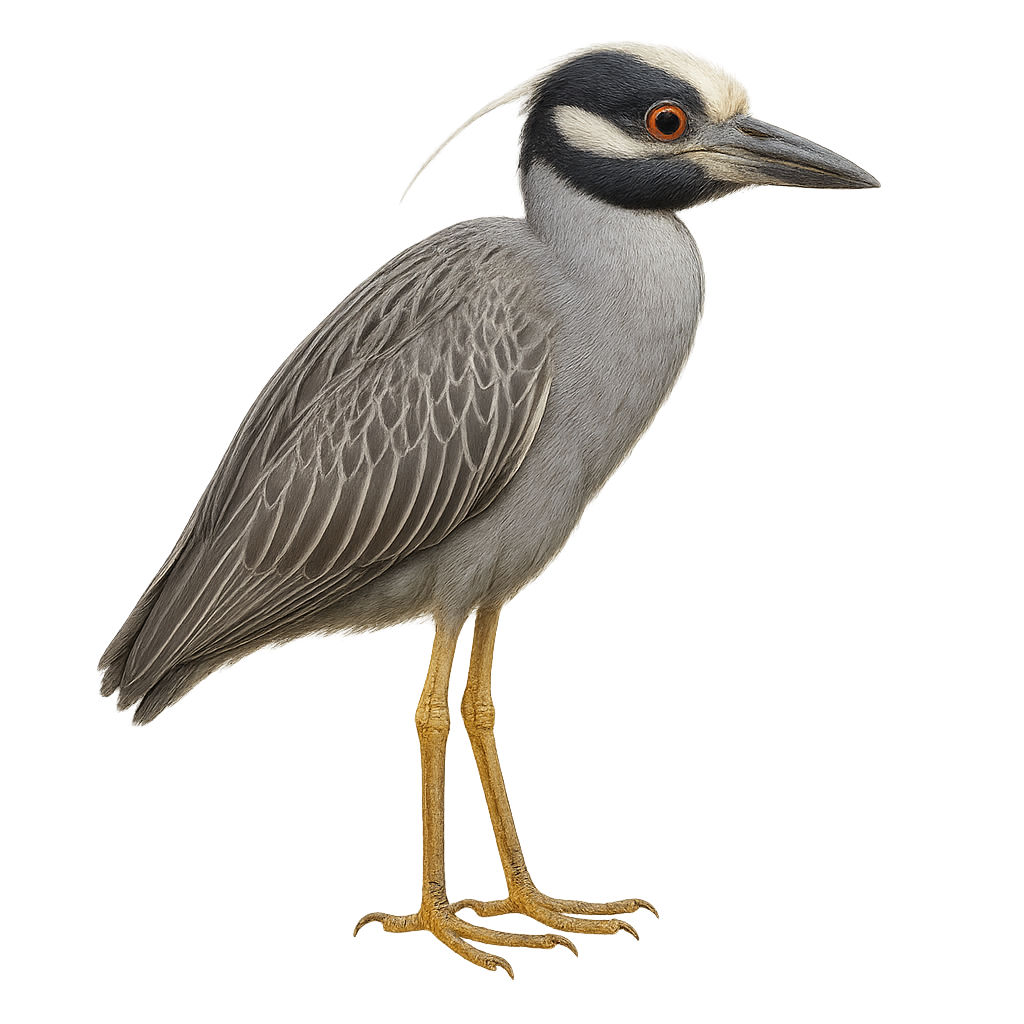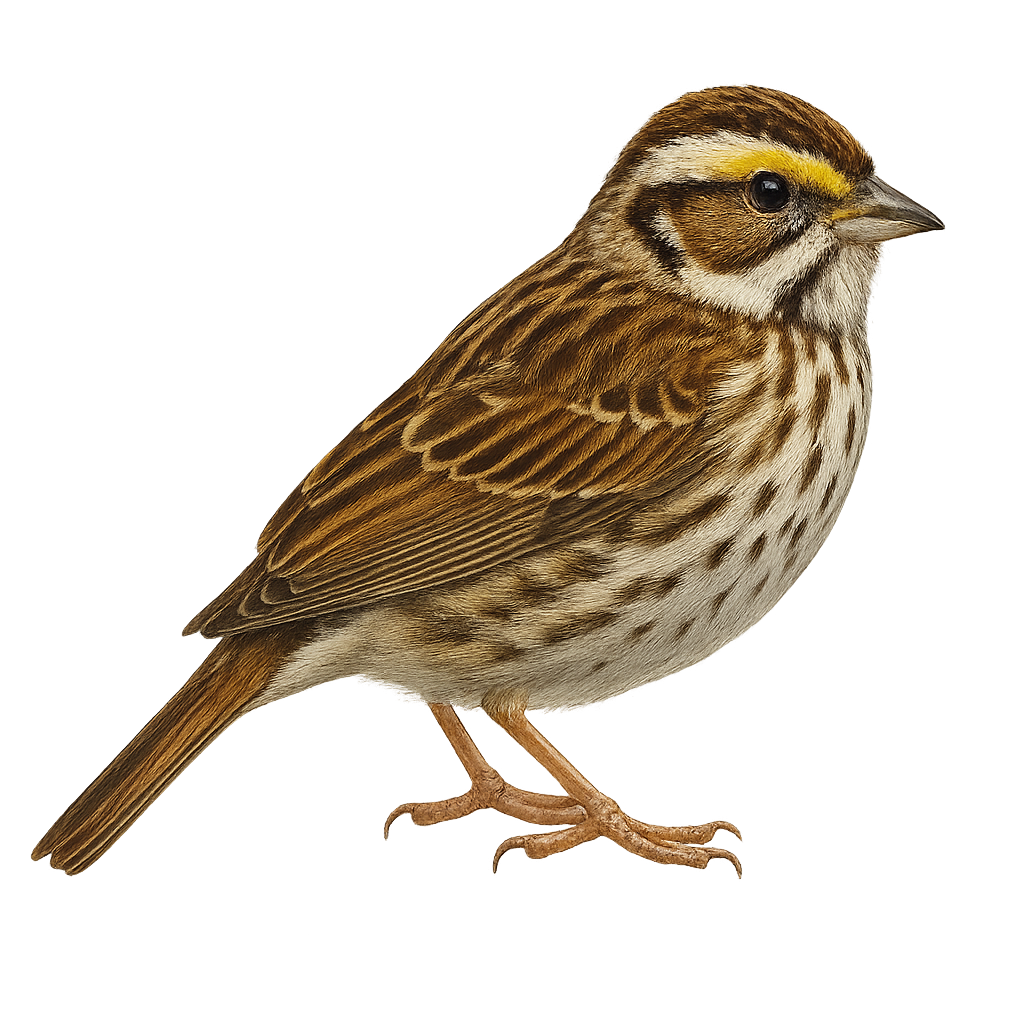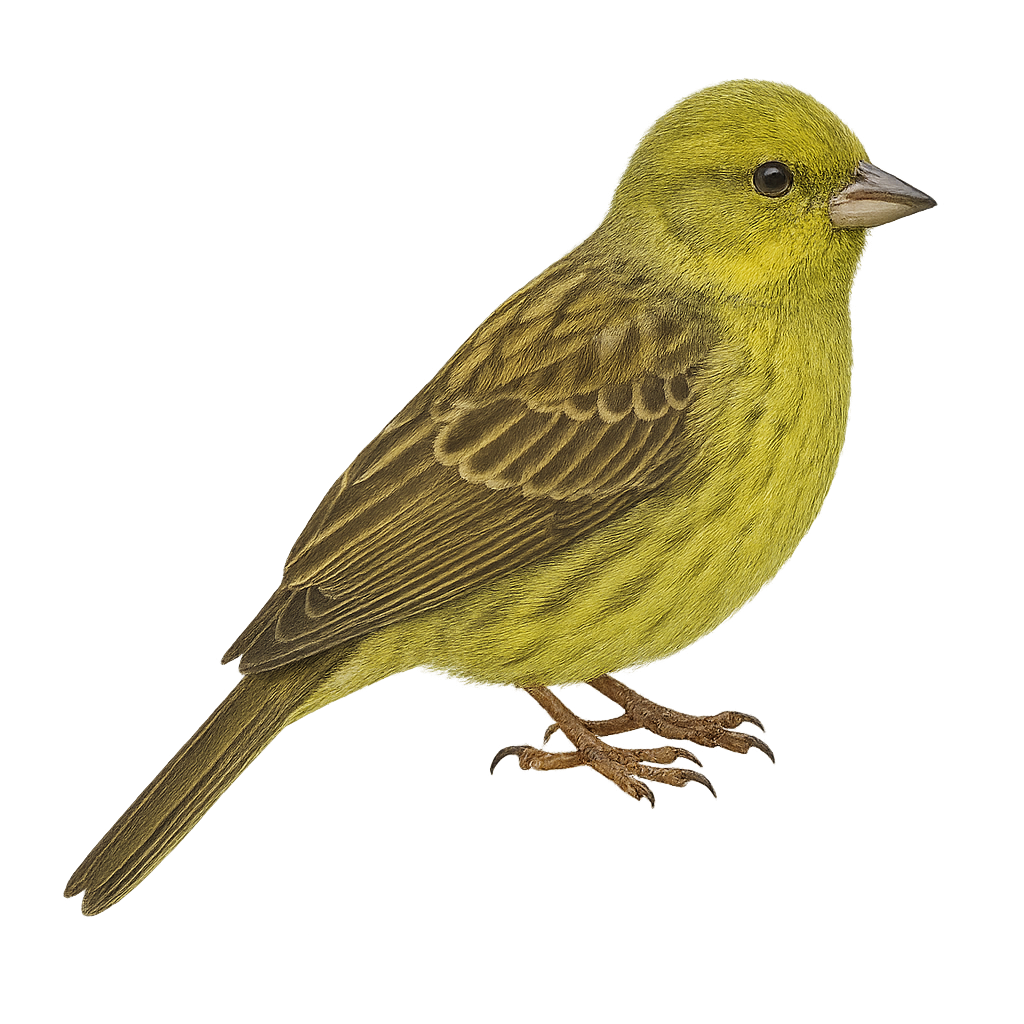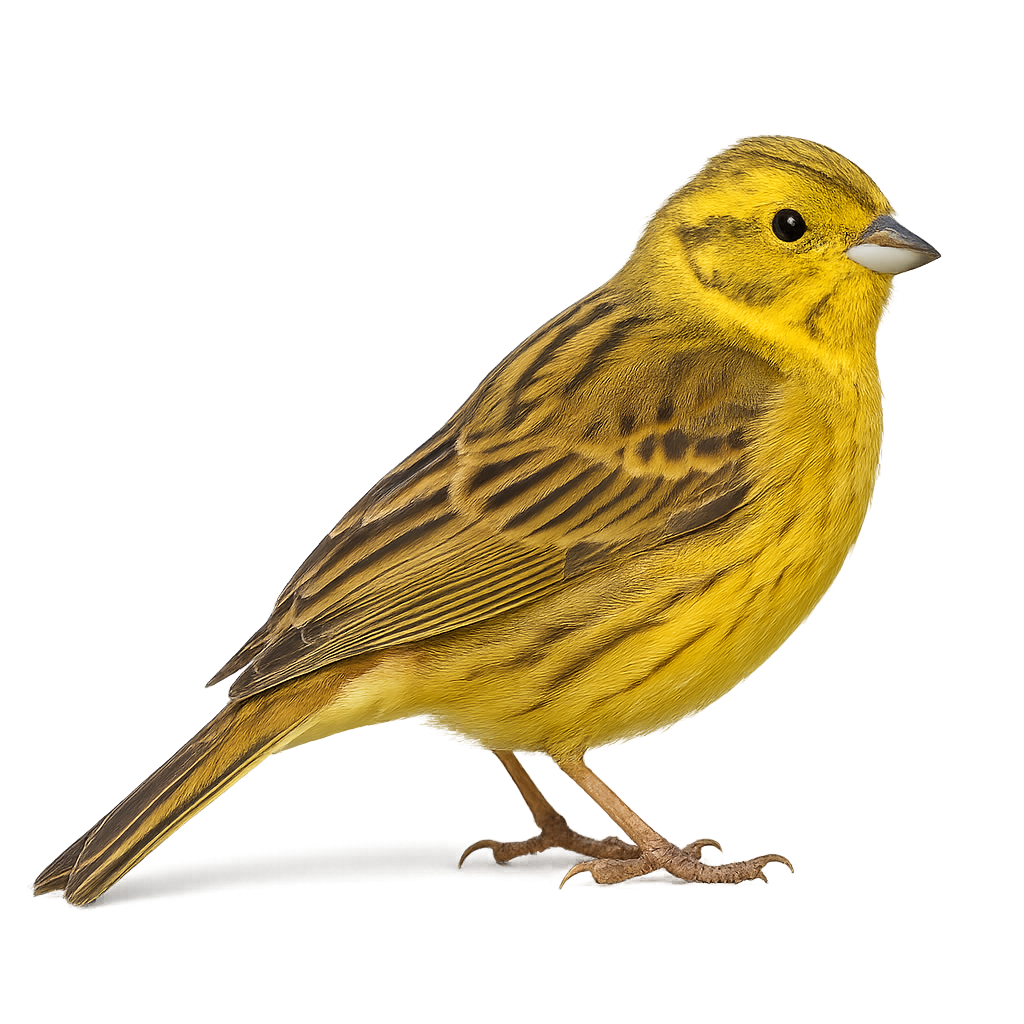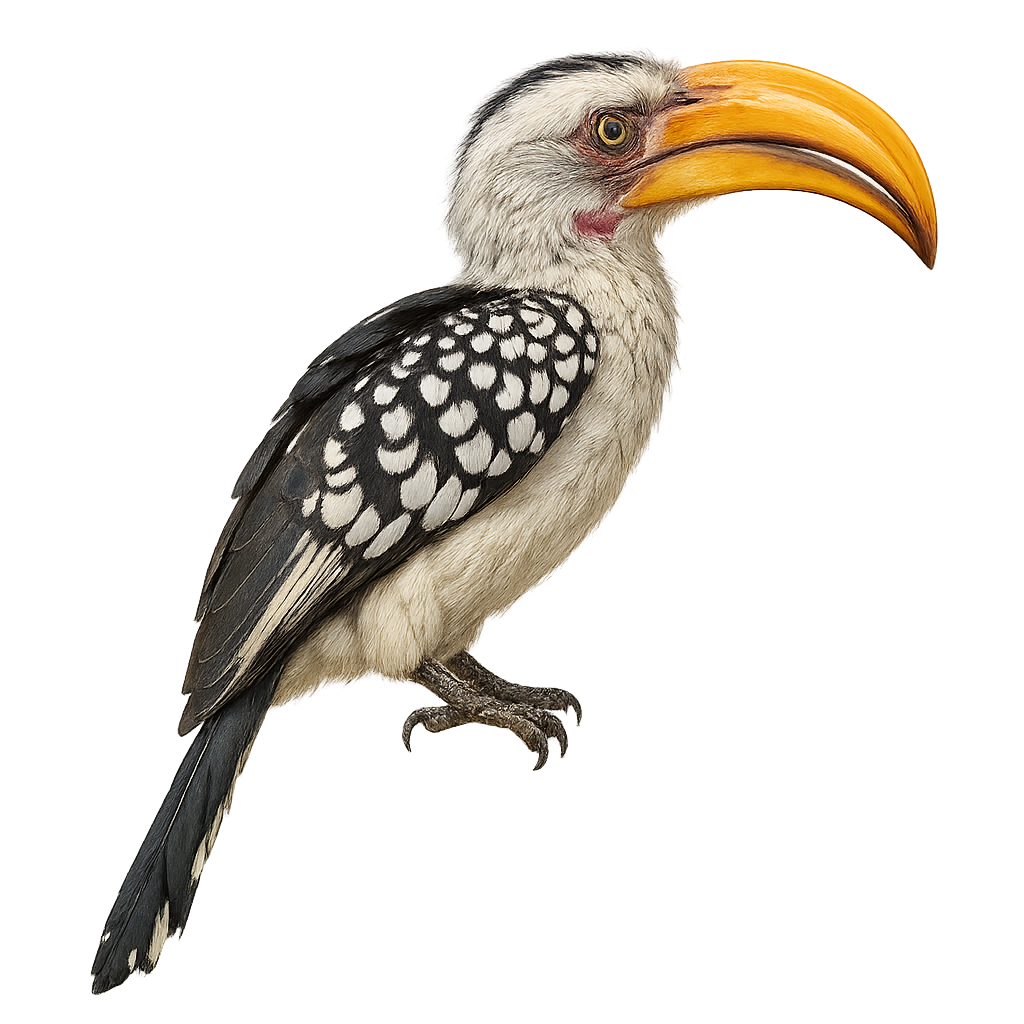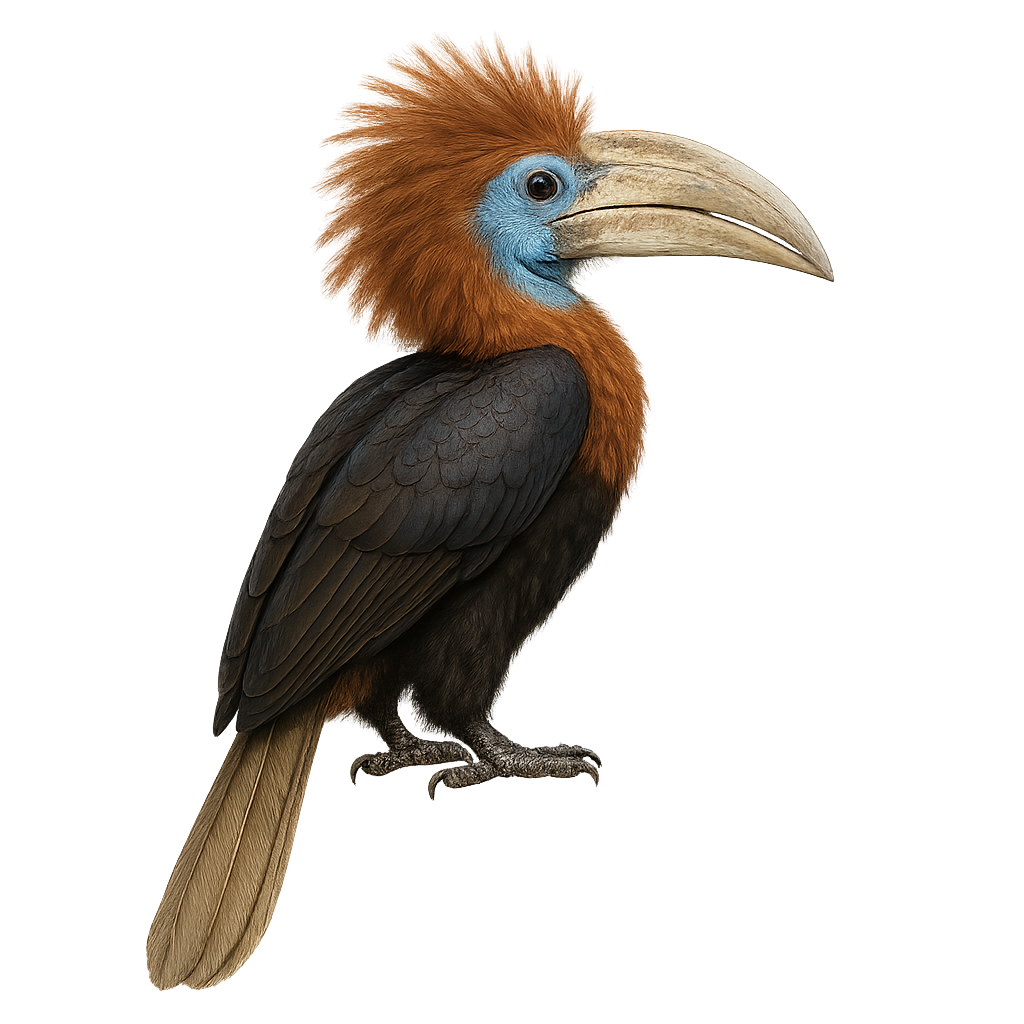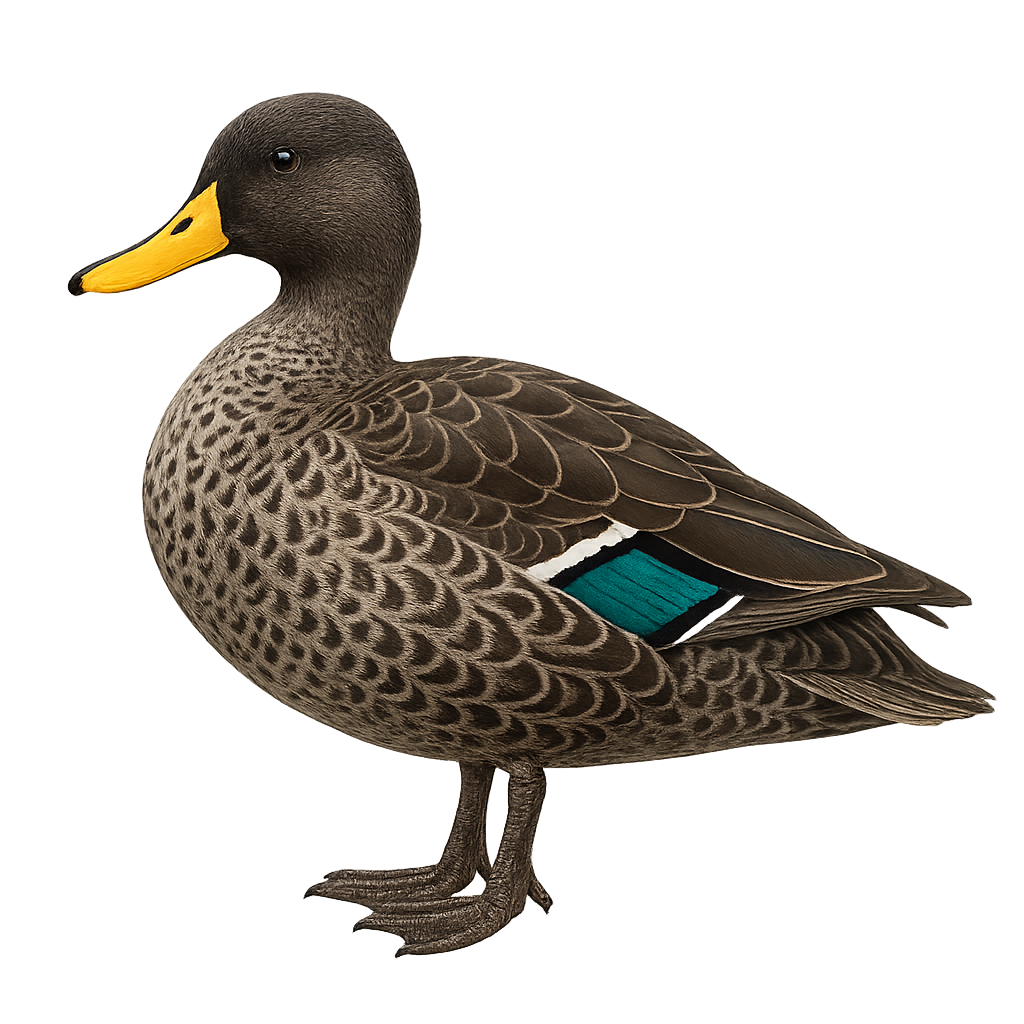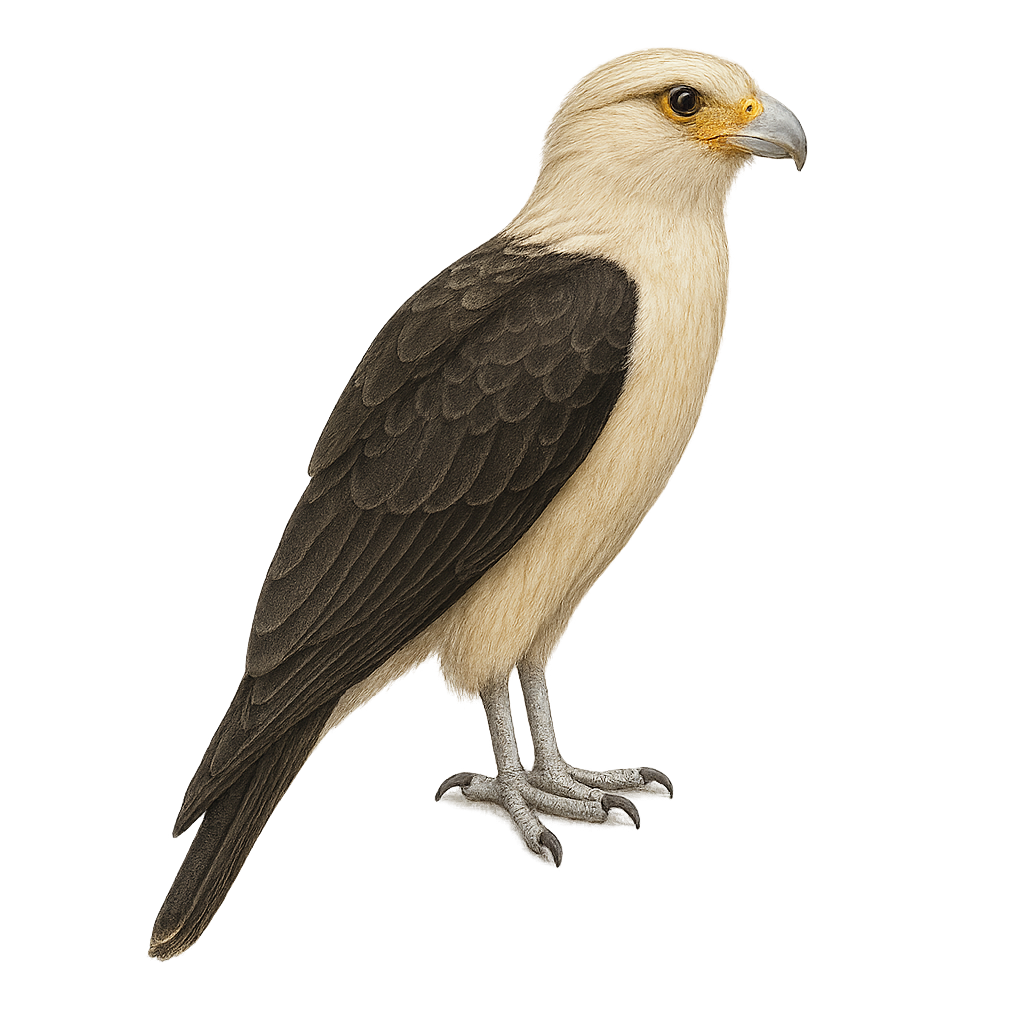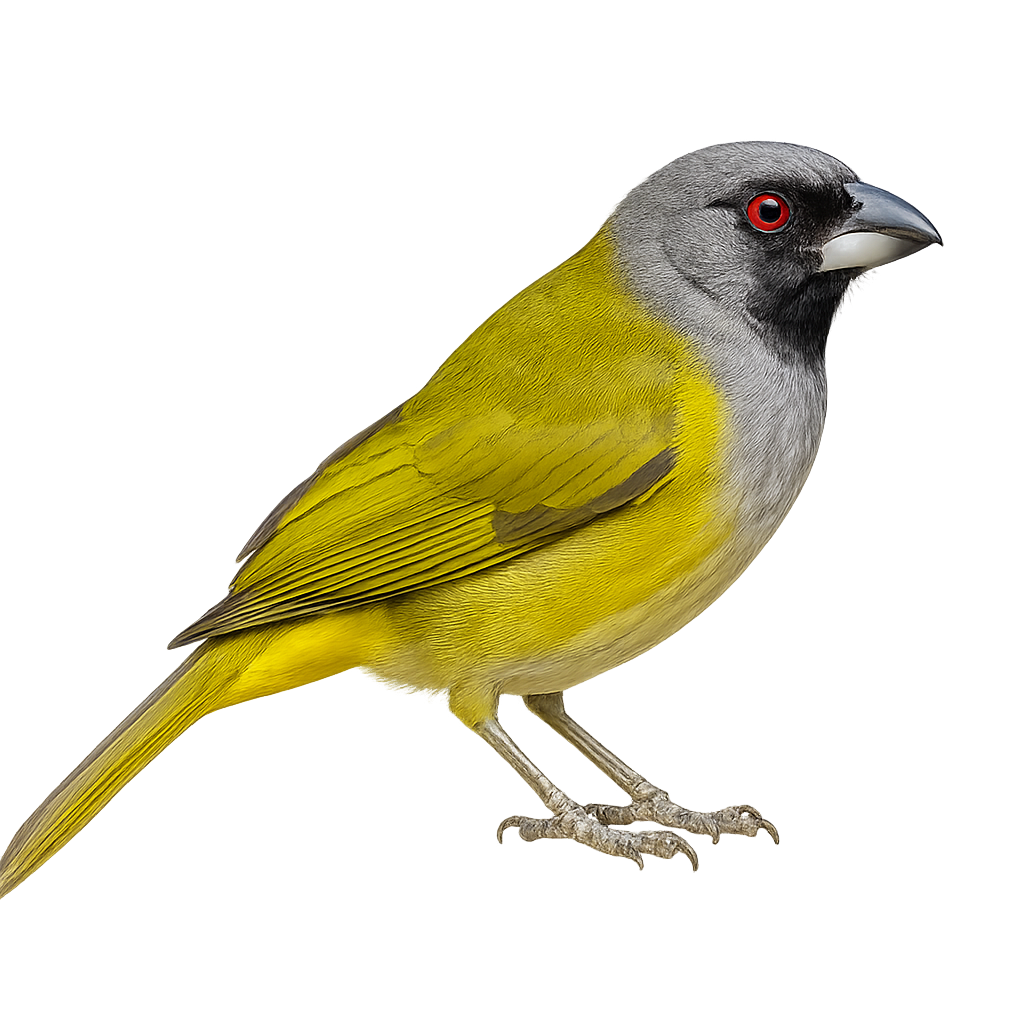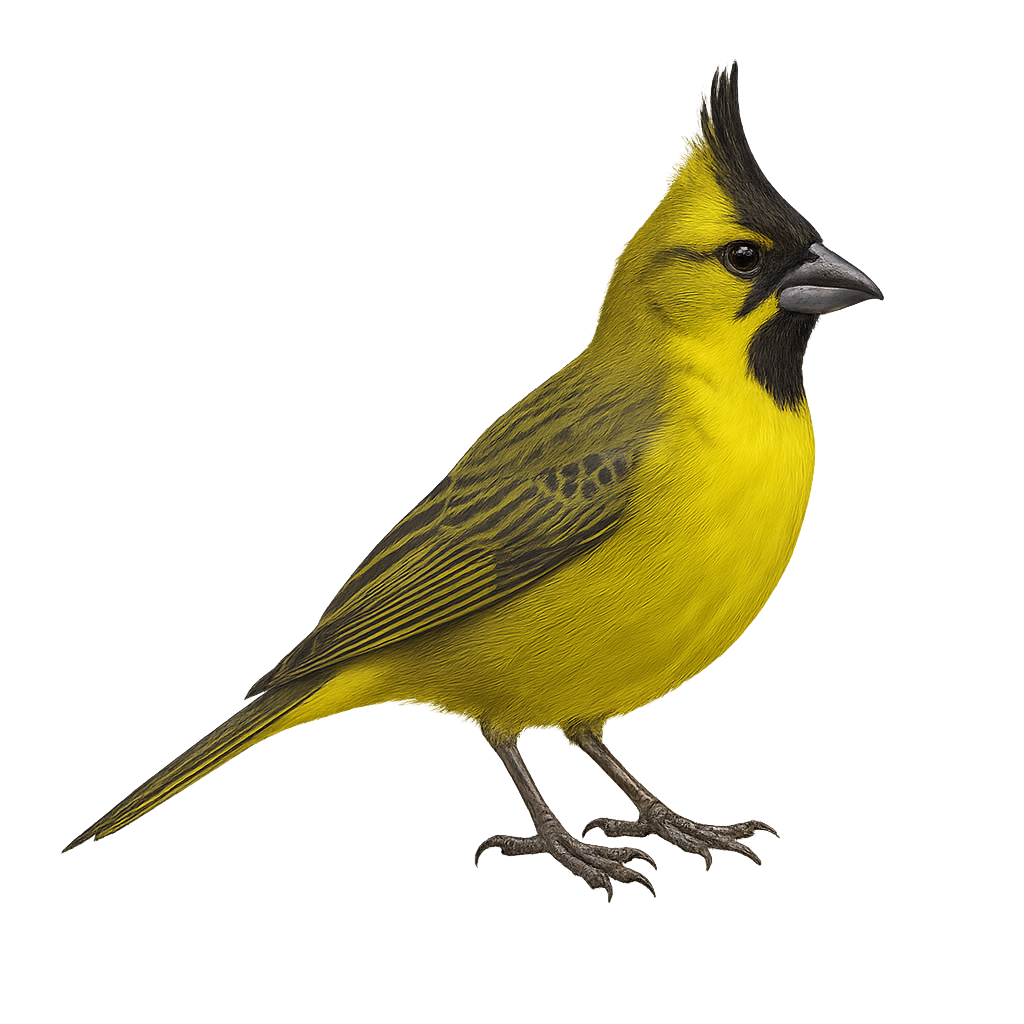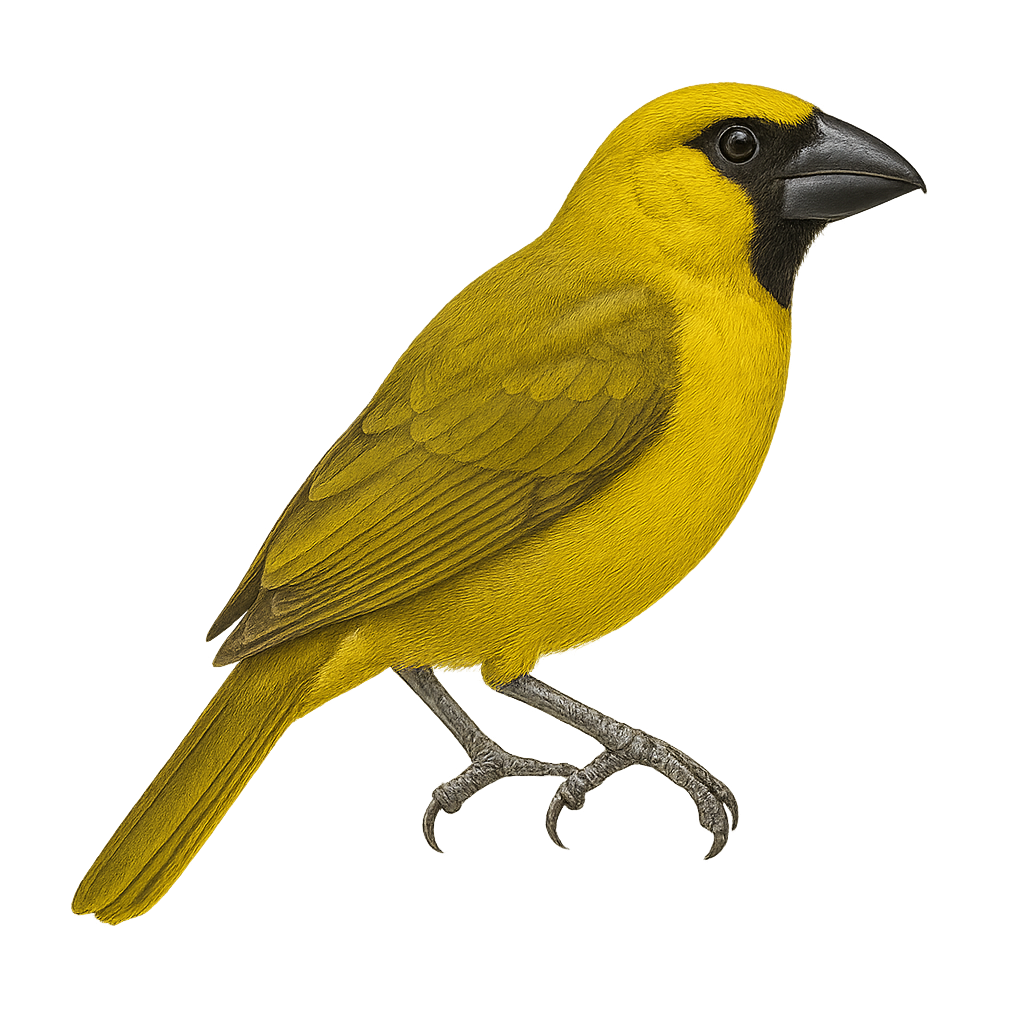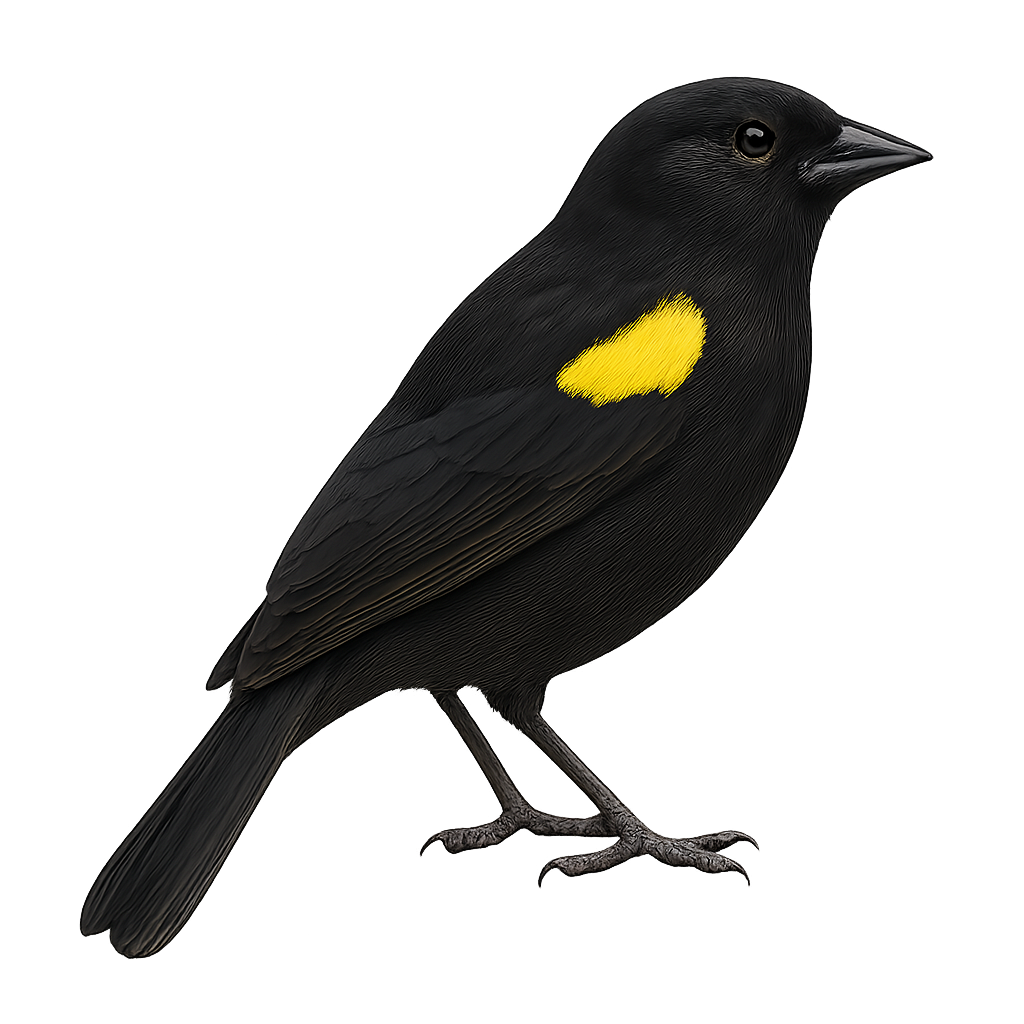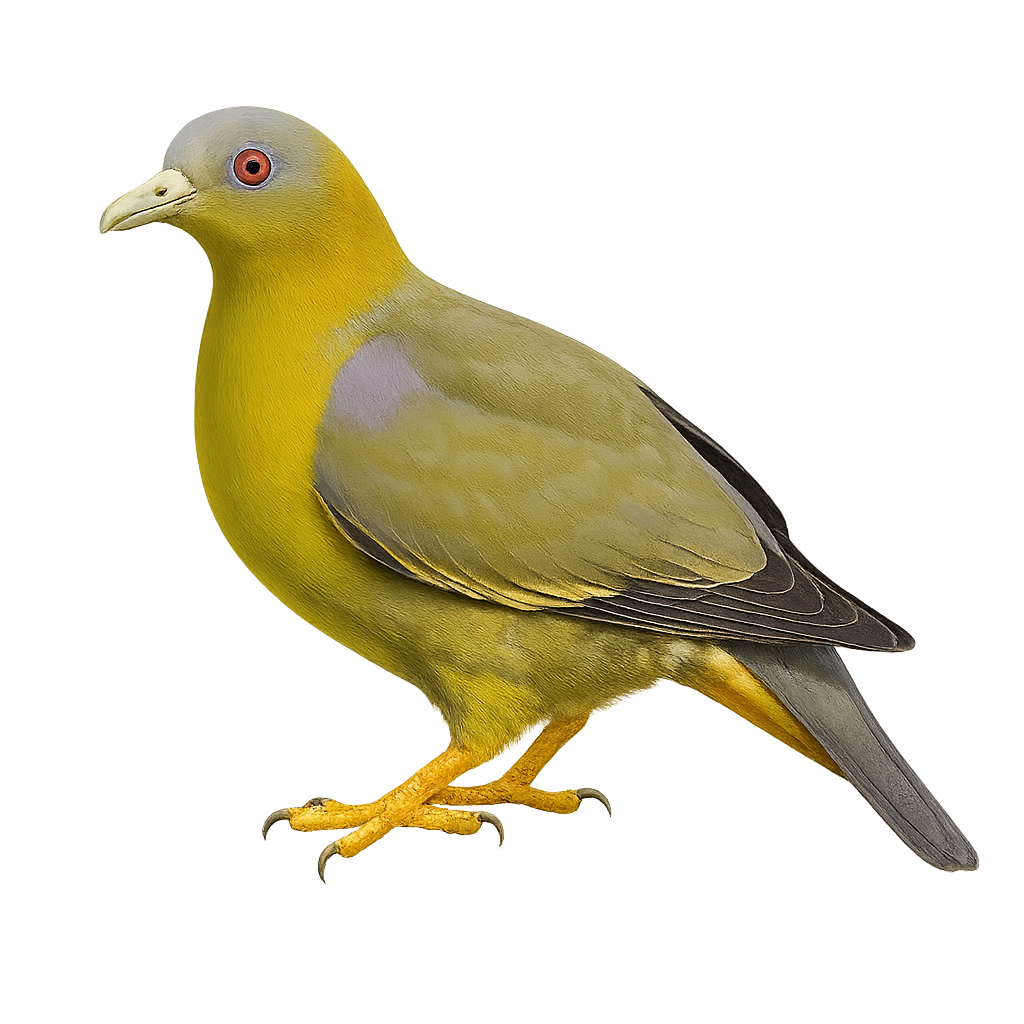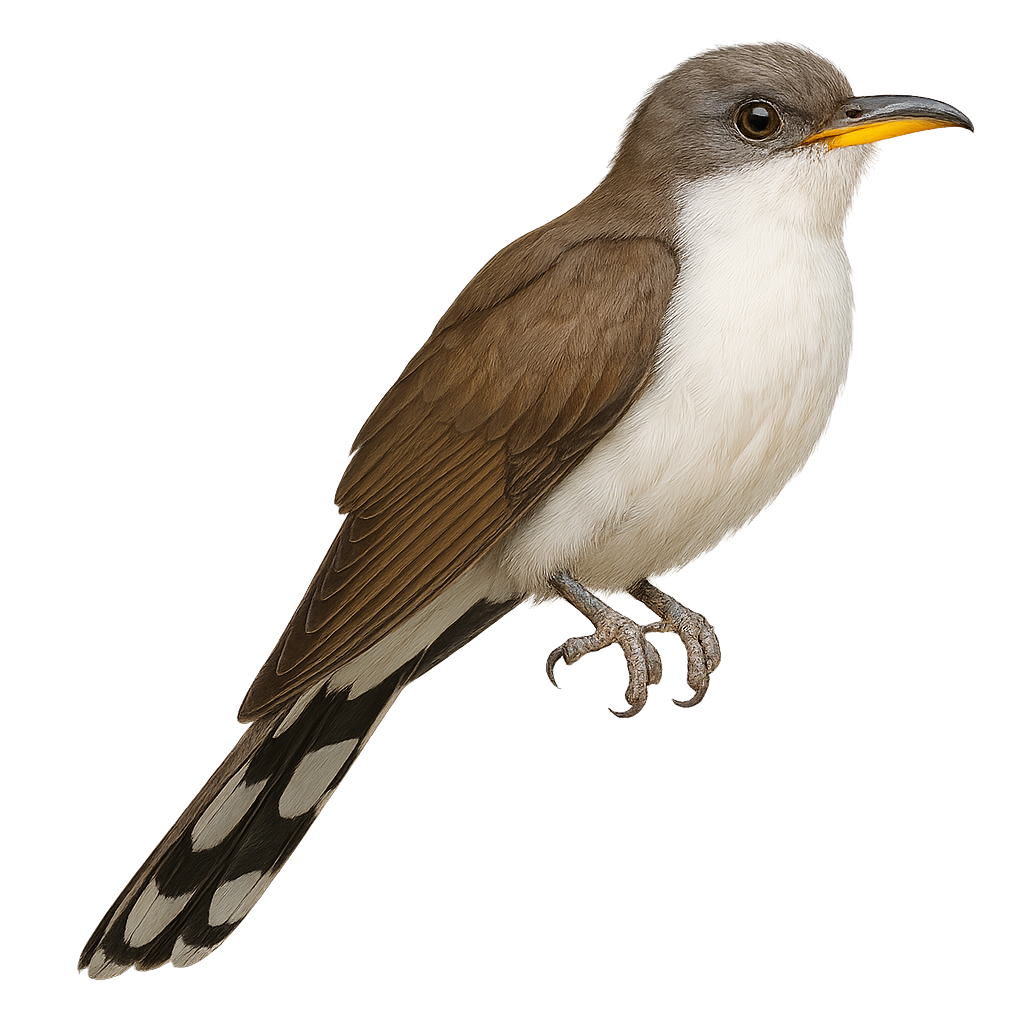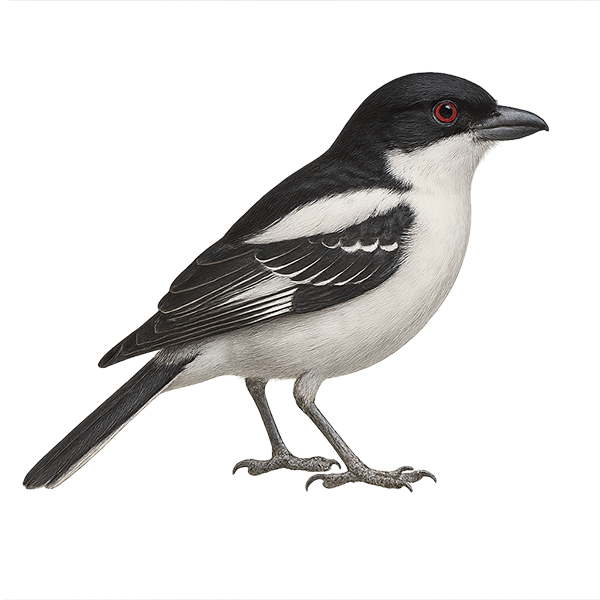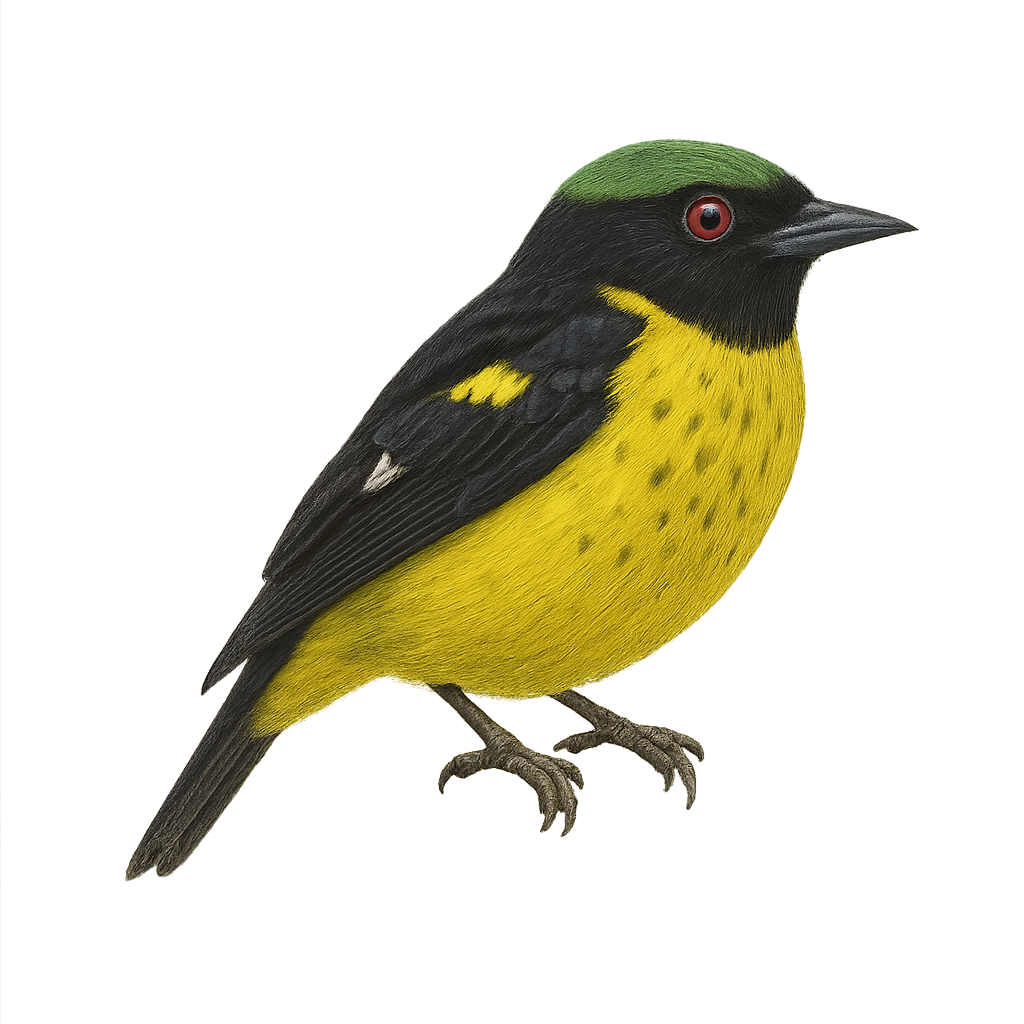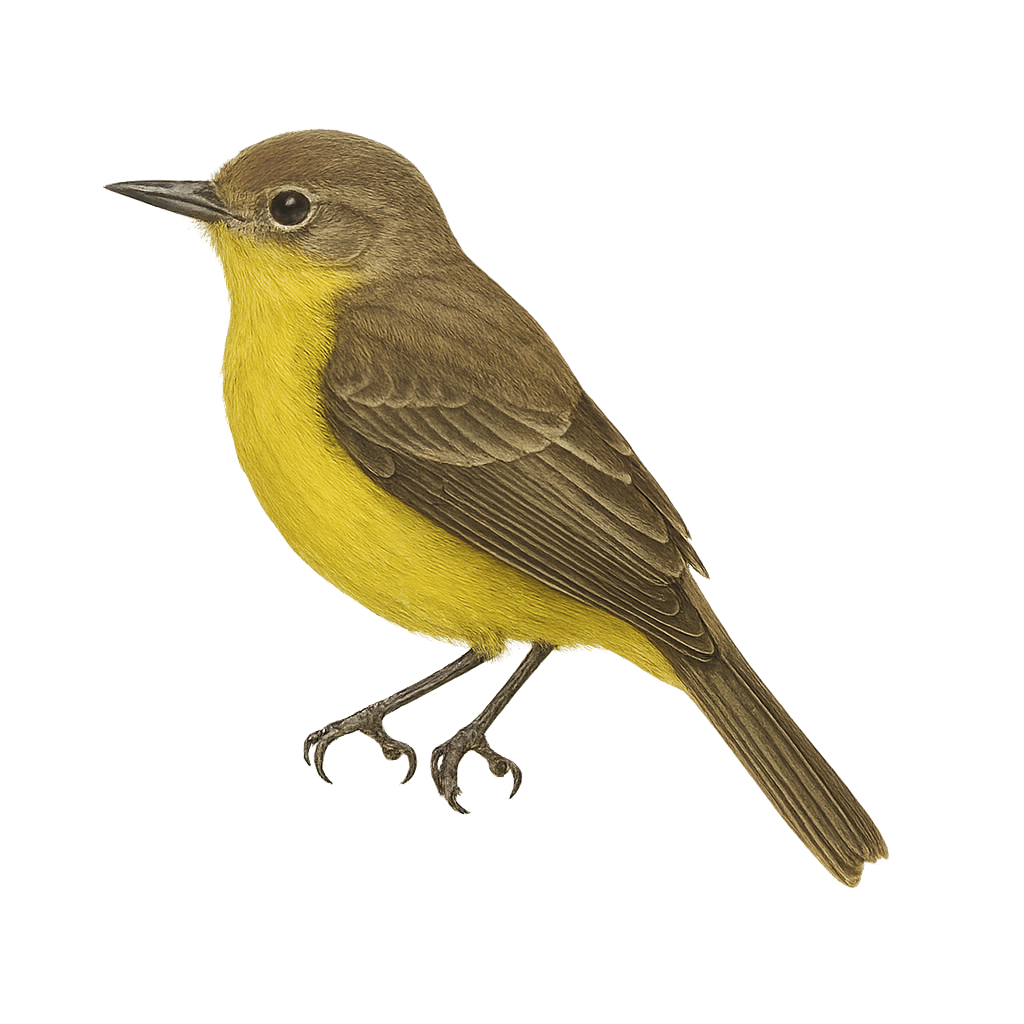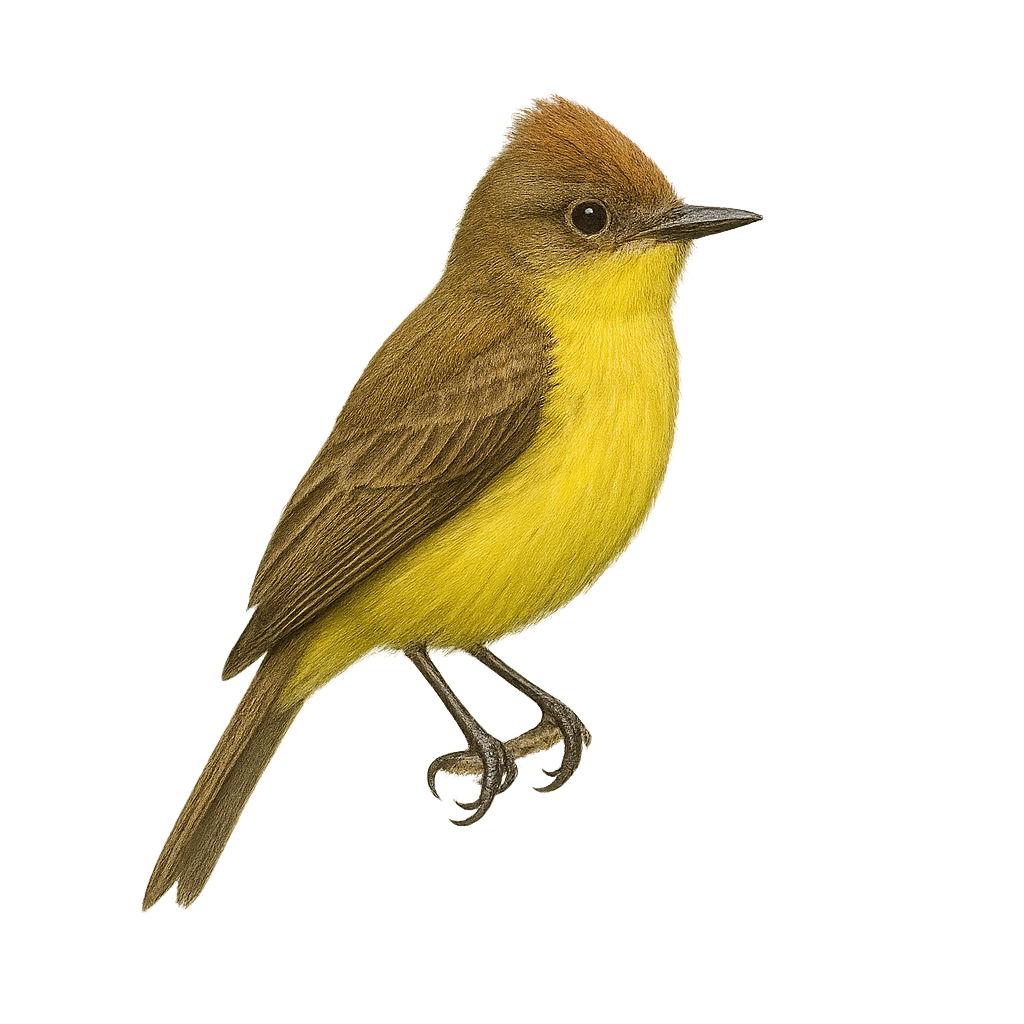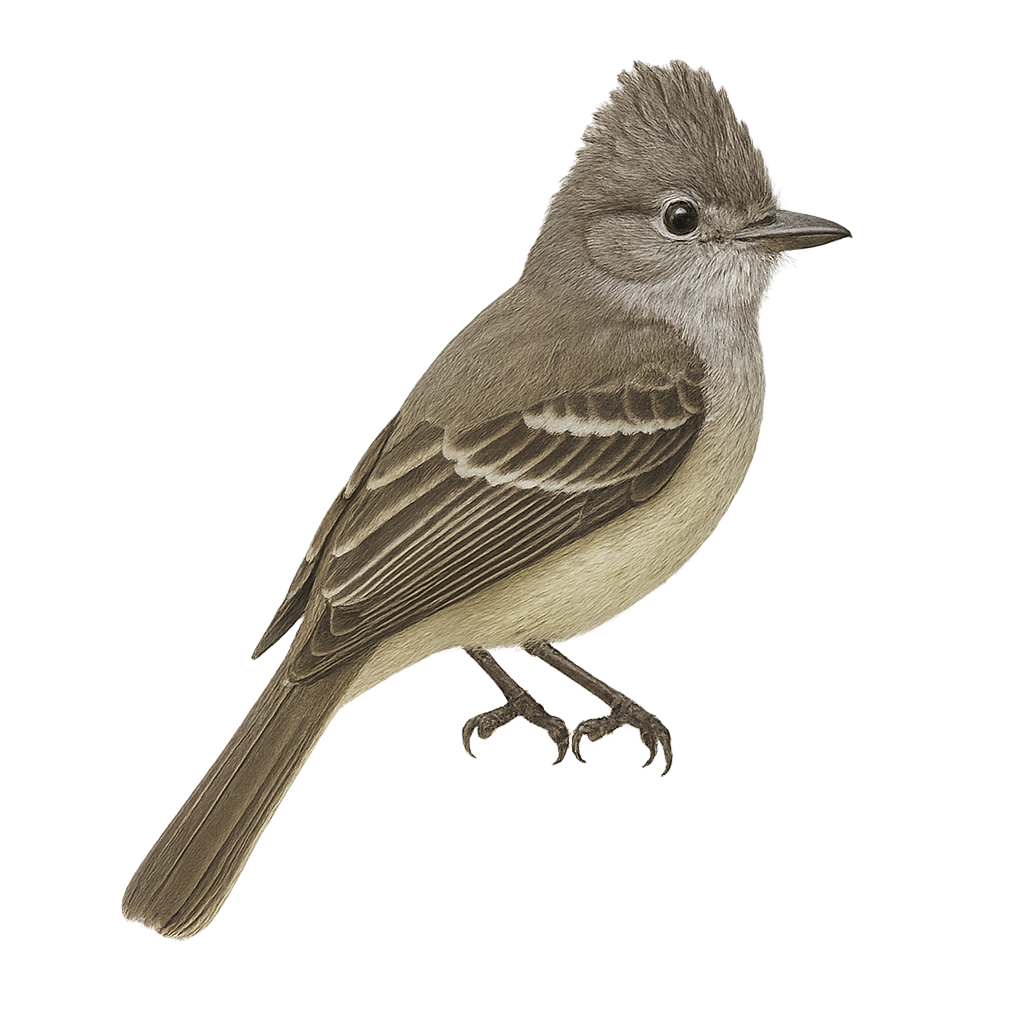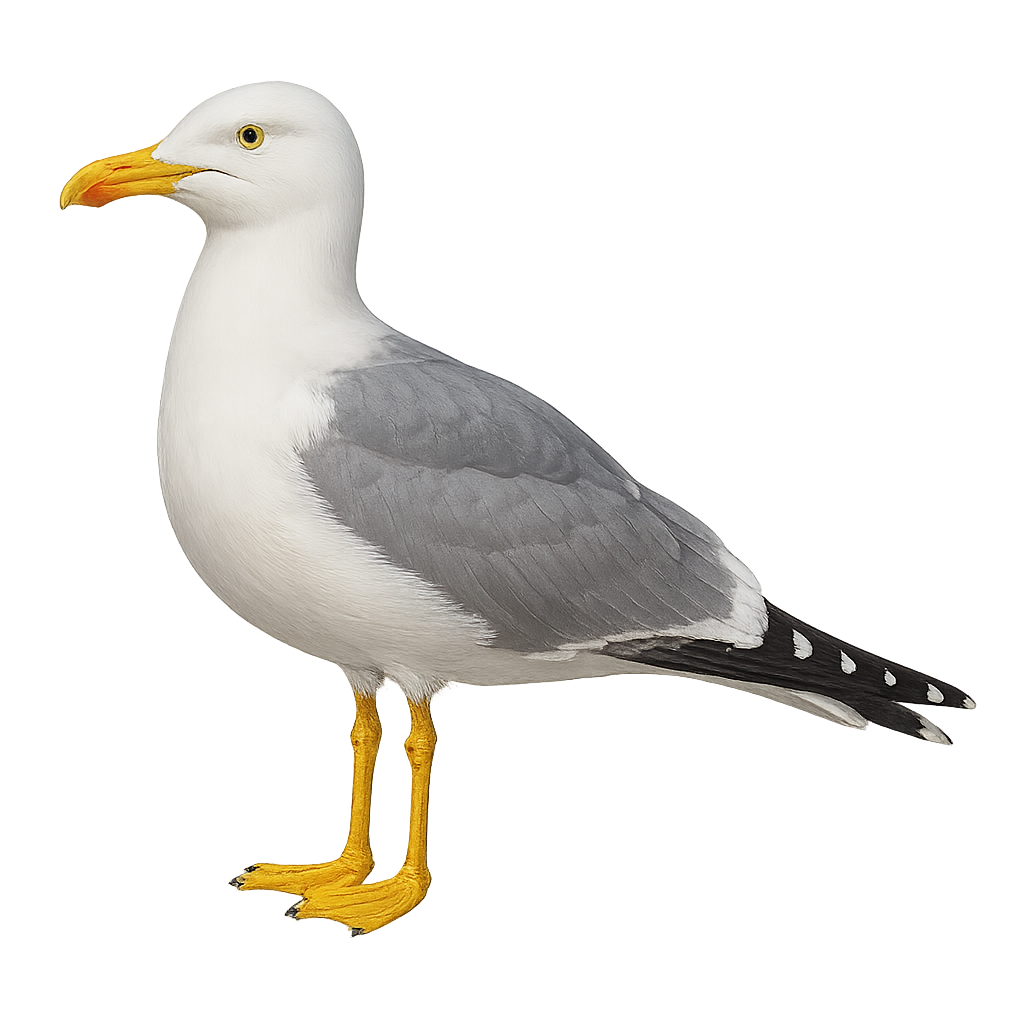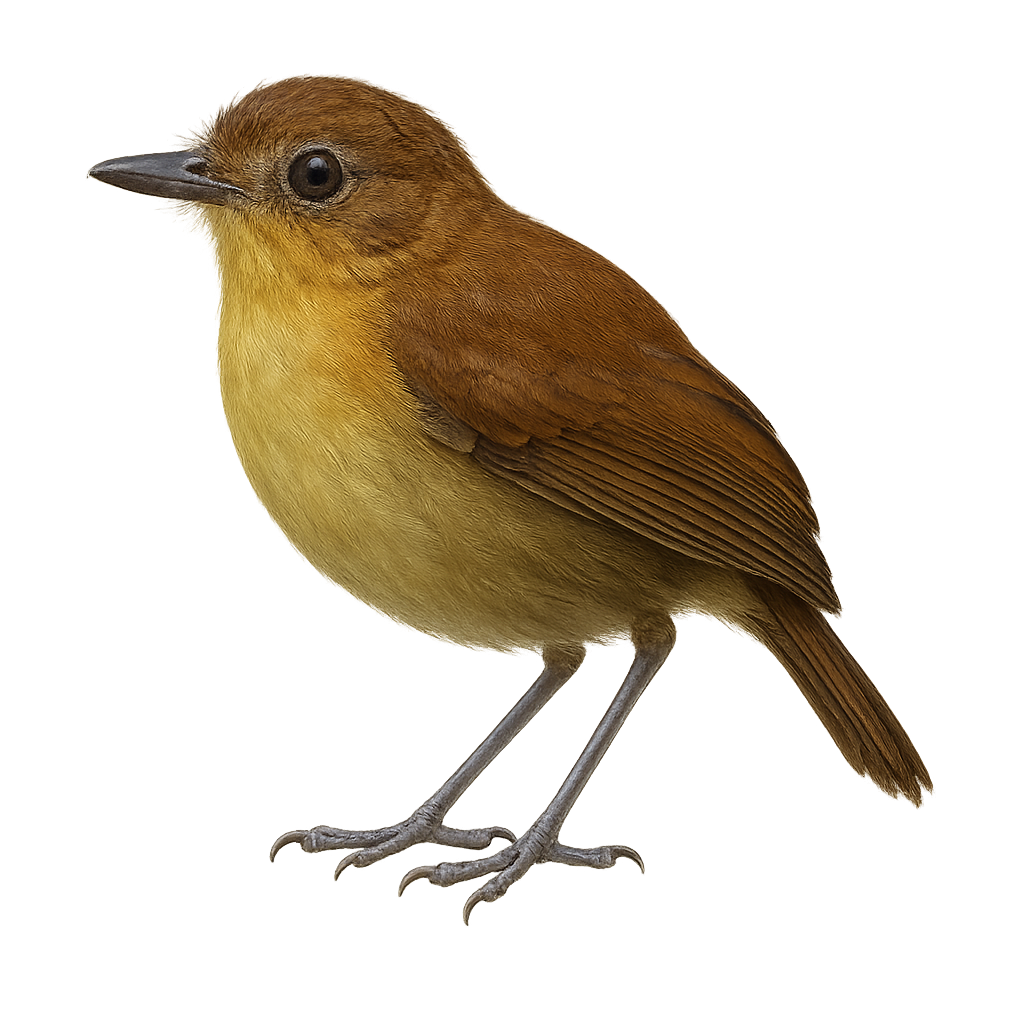The Yellow-shouldered Amazon is a medium-sized parrot, measuring about 33 cm in length. Its plumage is primarily green, with yellow hues on the shoulders and head. This species is endemic to the islands of Barbados and some coastal regions of Venezuela. It mainly inhabits dry forests and mangroves. The Yellow-shouldered Amazon is known for its ability to mimic sounds and its sociability. Unfortunately, it is threatened by habitat loss and illegal trade. Conservation efforts are crucial to ensure its survival.
The Yellow-headed Amazon is a medium-sized parrot known for its bright yellow head contrasting with its green body. Native to the tropical and subtropical forests of Central and South America, it is often found in woodlands and mangroves. With remarkable intelligence, this species is famous for its ability to mimic sounds and human speech, making it a popular pet. However, its wild population is declining due to deforestation and illegal trade. It typically lives in groups and feeds on fruits, seeds, and nuts. In captivity, it can live up to 50 years.
The Yellow-breasted Apalis is a small passerine bird belonging to the Cisticolidae family, primarily found in sub-Saharan Africa. It measures about 11 to 13 cm in length and is distinguished by its bright yellow throat, white belly, and olive-green back. Its natural habitat includes dry forests, savannas, and shrublands. This bird is often seen in pairs or small groups, feeding mainly on insects and small invertebrates. Its song is a melodious trill, often heard at dawn. Although widely distributed, it is sometimes threatened by deforestation and habitat loss.
The Yellow-rumped Tinkerbird, Pogoniulus bilineatus, is a small, colorful bird from the Lybiidae family. It is primarily found in the tropical forests of sub-Saharan Africa, distinguished by its olive-green plumage and bright yellow belly. This tinkerbird is recognizable by its two distinct white bands on the head. It primarily feeds on fruits, but also catches insects with agility. Its song is a rapid, repetitive trill, often heard in the canopy. Although generally solitary, it can be seen in small family groups. Its ability to adapt to various habitats, including gardens and plantations, makes it a relatively common bird within its range.
The yellow wagtail is a small migratory passerine bird found primarily in meadows, cultivated fields, and riverbanks across Europe, Asia, and North Africa. It is easily recognized by its bright yellow plumage on the belly and chest, its slender legs, and its quick movements. This bird primarily feeds on insects and invertebrates, which it captures by running on the ground or pecking at the grass.
The Yellow-crowned Night Heron, Nyctanassa violacea, is a medium-sized bird in the heron family. It is easily identified by its striking yellow crown and bluish-gray plumage. This bird is primarily found in wetlands, mangroves, and coastal marshes from the southern United States to northern South America. It feeds mainly on crustaceans, particularly crabs, which it skillfully hunts with its strong bill. The Yellow-crowned Night Heron is a crepuscular and nocturnal bird, often seen alone or in small groups. Although relatively tolerant of human presence, it prefers quiet habitats for breeding.
The Yellow Bittern, or Botaurus sinensis, is a small heron known for its modest size and delicate plumage. Measuring about 38 to 40 cm in length, it features light brown plumage with darker shades on its back and wings. Its slender, pointed beak is perfect for catching small fish and aquatic insects. It is primarily found in the wetlands of Asia, especially in marshes, rice fields, and lake edges. This bittern is known for its discretion and ability to blend into the vegetation, making it difficult to spot. It is often active at dusk and dawn, when it primarily feeds.
The Yellow-browed Bunting, Emberiza chrysophrys, is a small passerine bird belonging to the Emberizidae family. It is easily recognized by its bright yellow eyebrows contrasting with its brown, streaked plumage. This bunting inhabits coniferous forests and shrublands in Asia, particularly in Siberia and China. As a migratory bird, it winters in Southeast Asia. Its song is a melodious trill, often heard during the breeding season. Though discreet, it can sometimes be seen in small flocks. Its population is stable, but it is vulnerable to habitat loss due to deforestation.
The Yellow Bunting, or Emberiza sulphurata, is a small passerine bird belonging to the Emberizidae family. It is primarily found in the wooded regions of Japan, where it is endemic. This bunting is notable for its bright yellow head, contrasting with its brown back and striped wings. It inhabits deciduous forests and shrubby areas, often near watercourses. Its song is melodious, consisting of clear, repetitive notes. Though discreet, it is occasionally seen in small groups. Its population is declining due to habitat loss and forest fragmentation. Preserving its natural habitats is crucial for its survival.
The yellowhammer is a small passerine, 15–16 cm long, with bright yellow head and breast in males and duller, brown-streaked plumage in females. It inhabits open fields, hedgerows, and edges, feeding on seeds and insects while foraging on the ground. During breeding (April to July), the male sings from a perch or in flight to mark territory and attract the female.
The yellowhammer is a small passerine bird found primarily in fields, meadows, and hedgerows across Europe and Asia. It is easily recognized by its bright yellow plumage, brown striped head, and pale yellow belly. This bunting is mainly insectivorous, but it also feeds on seeds and berries. It is often heard singing, especially during the breeding season, where it defends its territory with a clear and distinct song.
The Yellow-casqued Hornbill is a characteristic bird of the open forests and savannas of sub-Saharan Africa. It is easily recognizable by its large curved bill, adorned with a bright yellow casque that gives it a distinctive appearance. Despite its massive size, the bill is lightweight and hollow, allowing this bird to fly with agility despite its size. Its plumage is primarily black and white, with yellow accents around the bill and casque.
The Yellow-casqued Hornbill is primarily frugivorous, feeding on fruits, berries, and insects found in trees. It is often seen in pairs or small groups, moving from branch to branch and emitting loud and distinct calls. While it is relatively widespread in its habitat, it may be threatened by deforestation and habitat loss due to agricultural expansion.
The Yellow-casqued Hornbill, or Ceratogymna elata, is a large forest hornbill of West Africa, notable for its massive size, glossy black plumage, and prominent pale yellow bill with a large casque, especially in males. It inhabits dense lowland forests in countries such as Guinea, Liberia, Ivory Coast, Ghana, and Sierra Leone. Usually seen in pairs or small groups high in the canopy, it feeds mainly on fruit, but also consumes insects and small animals. Classified as vulnerable, the Yellow-casqued Hornbill is threatened by habitat loss and hunting within its limited range.
The Yellow-billed Duck, Anas undulata, is a medium-sized duck species known for its bright yellow bill and greyish-brown plumage with wavy patterns. It is primarily found in sub-Saharan Africa, inhabiting lakes, rivers, and marshes. This duck is often seen in small groups but can form large flocks outside the breeding season. It feeds mainly on aquatic plants, seeds, and aquatic insects. Although generally discreet, it can be quite noisy, producing nasal calls. The Yellow-billed Duck is an adaptable species, capable of living in various aquatic habitats, allowing it to maintain stable populations despite environmental pressures.
The Yellow-headed Caracara, Milvago ferrugineus, is a medium-sized raptor known for its pale head and rusty-brown plumage. It primarily inhabits open regions of South America, from savannas to agricultural areas. An opportunistic feeder, it consumes carrion, insects, and occasionally small vertebrates. Its flight is often slow and gliding, and it is frequently seen walking on the ground in search of food. Although a bird of prey, it is less aggressive than other raptors. Its adaptability to various environments has allowed it to thrive despite environmental changes.
The Yellow-shouldered Grosbeak, or Parkerthraustes humeralis, is a medium-sized bird known for its distinctive plumage. It features bright yellow shoulders that contrast with its primarily olive-brown body. This bird is often found in the humid tropical forests of South America, particularly in Brazil, Colombia, and Venezuela. It is known for its melodious song and its ability to blend into its surroundings thanks to its plumage. Although its habitat is threatened by deforestation, it remains relatively common in protected areas. The Yellow-shouldered Grosbeak primarily feeds on fruits, seeds, and insects found in the forest canopy.
The Gubernatrix cristata, commonly known as the Yellow Cardinal, is a medium-sized songbird recognizable by its distinctive crest and bright yellow plumage. Native to South America, it primarily inhabits the wooded regions and open savannas of Argentina, Uruguay, and Brazil. Unfortunately, this species is endangered due to illegal capture for the pet trade and habitat loss. The Yellow Cardinal is a social bird, often observed in small groups. Its melodious and powerful song is a characteristic trait that attracts the attention of ornithologists and bird enthusiasts. Conservation efforts are underway to ensure its survival, including the protection of its natural habitat and captive breeding programs.
The Yellow-green Grosbeak, Caryothraustes canadensis, is a vibrant bird found primarily in the tropical rainforests of Central and South America. Its plumage is a bright green with yellowish hues on the belly, and it has a robust silver-colored beak, which gives it its name. This bird measures about 18 cm in length and feeds mainly on fruits, seeds, and insects. It is often seen in small groups, actively moving through the canopy in search of food. Although relatively common in its natural habitat, it remains discreet and can be difficult to spot due to its plumage blending into the dense foliage.
The Yellow-winged Blackbird, Agelaius thilius, is a medium-sized bird easily recognizable by its distinctive yellow shoulders. It primarily inhabits wetlands, marshes, and open grasslands in South America. Its glossy black plumage contrasts with its bright yellow shoulders, making it particularly visible in its natural habitat. Males are generally more colorful than females, who have duller plumage. This bird is often seen in flocks, especially outside the breeding season. Its song is melodious and varied, used to mark its territory and attract females. Although quite common, it is important to preserve its habitats to ensure its survival.
The Yellow-footed Green Pigeon, or Treron phoenicopterus, is a medium-sized bird belonging to the Columbidae family. It is easily recognizable by its bright green plumage, yellow legs, and barred grey tail. This bird is primarily arboreal and feeds on fruits, especially figs. It is found in tropical and subtropical forests, mangroves, and open wooded areas of South Asia. Often seen in groups, it perches in trees or flies from one tree to another. The Yellow-footed Green Pigeon plays a crucial role in seed dispersal, aiding forest regeneration. Although generally discreet, its soft and melodious call can be heard from a distance.
The Yellow-billed Cuckoo is a medium-sized migratory bird, measuring about 30 cm in length. It is easily recognizable by its distinctive yellow bill and long brown wings. Its plumage is primarily gray-brown on the top and white underneath, with white spots on the tail. This bird is often heard before it is seen, thanks to its characteristic call. It primarily inhabits deciduous forests and wooded areas near water. A migratory species, it winters in South America. Its diet mainly consists of insects, especially caterpillars, but it also consumes fruits.
The Yellow-bellied Shrike, or Dryoscopus gambensis, is a medium-sized bird known for its distinctive plumage. It features a dark gray back, white belly, and black wings with shiny highlights. This bird is often found in the savannas and open forests of sub-Saharan Africa. It primarily feeds on insects, which it skillfully captures with its robust beak. The Yellow-bellied Shrike is a territorial bird, often seen alone or in pairs. Its song is melodious and varied, making it easily identifiable for birdwatchers. Although generally discreet, it may become more visible during the breeding season.
The Yellow-bellied Dacnis is a small, colorful bird belonging to the Thraupidae family. It is distinguished by its vibrant plumage, with a bright yellow belly contrasting with a blue-green back. Males and females exhibit sexual dimorphism, with males displaying more vivid colors. This bird is primarily frugivorous but also feeds on insects. It is found in the humid tropical forests of South America, particularly in Colombia, Peru, and Brazil. It is often seen in small groups, actively moving through the canopy in search of food. Although its habitat is threatened by deforestation, the Yellow-bellied Dacnis is currently classified as Least Concern by the IUCN.
The Yellow-bellied Tyrannulet is a small passerine bird belonging to the Tyrannidae family. It is characterized by its bright yellow belly, contrasting with an olive-brown back. This bird is primarily found in the wetlands and marshes of South America, particularly in Argentina, Brazil, and Uruguay. It is often seen moving nimbly among reeds and bushes, searching for insects and small invertebrates. Although its song is subtle, it plays a crucial role in communication between individuals, especially during the breeding season. Despite its small size, it is an important player in its ecosystem, contributing to the regulation of insect populations.
The Pseudocolopteryx citreola, also known as the Yellowish Tyrannulet, is a small passerine bird belonging to the Tyrannidae family. It is primarily found in the wetlands and marshes of South America, particularly in Argentina, Brazil, and Uruguay. This bird is characterized by its bright yellow plumage on the belly and underparts, contrasting with darker wings and back. It is often seen moving swiftly through dense vegetation, searching for insects and small invertebrates. Although relatively discreet, its melodious and repetitive song makes it easily identifiable for birdwatching enthusiasts.
The Yellow-bellied Elaenia is a small passerine bird belonging to the Tyrannidae family. This bird is easily recognizable by its bright yellow belly contrasting with its dull olive back. It has a subtle crest and slightly white-striped wings. It is primarily found in tropical and subtropical forests but also adapts to open woodlands and savannas. Its song is distinctive, often described as a melodious whistle. The elaenia is a diurnal bird, active mainly in the morning and late afternoon. It feeds primarily on insects and fruits, which it captures in flight or by foraging through foliage.
The Yellow-shouldered Widowbird is a small bird from the Ploceidae family, predominantly found in the humid regions of sub-Saharan Africa. This passerine is notable for the male's glossy black plumage with striking yellow shoulder patches, while the female is more subdued in brown tones. Males are particularly eye-catching during the breeding season, displaying long tail feathers to attract females. They live in flocks and are often seen in wet grasslands, marshes, and agricultural areas. Their diet mainly consists of seeds, but they also eat insects. Although their population is stable, habitat destruction remains a potential threat.
The Yellow-rumped Flycatcher, or Ficedula zanthopygia, is a small passerine bird belonging to the Muscicapidae family. Males are easily identified by their striking black and yellow plumage, with a bright yellow belly and a distinctive white wing patch, while females are more subdued in brown and yellow tones. This migratory bird breeds in the temperate forests of East Asia, including China, Korea, and Russia, before migrating south to winter in Southeast Asia. It inhabits forests, parks, and gardens, feeding primarily on insects. Its melodious song and spectacular courtship displays make it a favorite among birdwatchers.
The yellow-legged gull is a large seabird found primarily along the Mediterranean and Atlantic coasts. It is easily recognized by its white plumage, gray wings, and yellow legs. This gull is omnivorous and feeds on fish, marine invertebrates, and food waste, making it an opportunist. It is also known for its nesting behaviors on rocky coastlines and cliffs and can occasionally be seen in urban areas.
The Yellow-breasted Antpitta is a discreet and fascinating bird belonging to the Grallariidae family. It is primarily found in the humid forests of the Andes, often hiding in dense vegetation. Its plumage is characterized by a tawny hue on the breast, contrasting with an olive-brown back. This bird is known for its melodious song, often heard before being seen. It primarily feeds on insects and other small invertebrates found by foraging on the forest floor. The Yellow-breasted Antpitta is a solitary bird, rarely seen in groups. Its shy nature and difficult-to-access habitat make it a challenge for birdwatchers.


